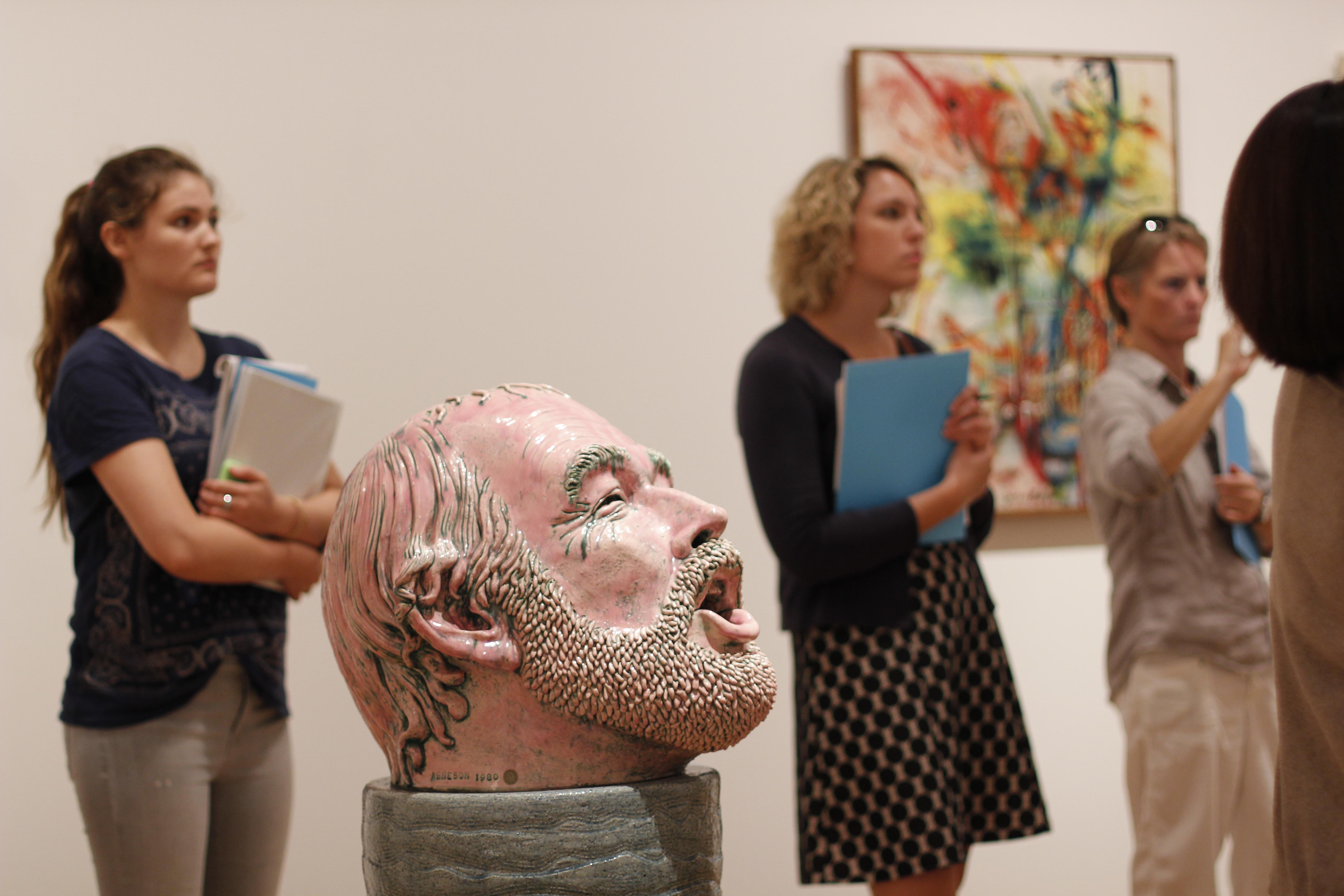
Last Thursday and Friday, the Yale University Art Gallery hosted a symposium that considered the role of ceramics in modern and contemporary art.
Entitled “Ceramic Presence: Conversations on Making, Looking and the Museum,” the event brought together a group of artists, scholars, collectors and museum professionals to discuss the role of ceramics in late-20th-century art, highlighting the medium as an emerging mode of artistic expression in the 1950s and ’60s. In addition, the symposium sought to highlight artistic dialogue during these decades, as well as the role of museums and publications in crafting art historical narratives. Accompanied by an exhibition on display in the YUAG through January 2016, “The Ceramic Presence in Modern Art: Selections from the Linda Leonard Schlenger Collection,” the symposium included a variety of lectures, gallery sessions and conversations with individuals such as John Mason, a ceramic artist who has several pieces in “The Ceramic Presence,” and Linda Leonard Schlenger, the collector who lent many of the works on display in the exhibition. YUAG Director Jock Reynolds suggested that ceramics have a long history, but have often been viewed as “decorative” rather than “fine” art, a notion both the symposium and the exhibition hoped to question.
“Ceramics were one of the first things made by human hands,” Reynolds said. “Almost every culture has ceramic pieces.”
Schlenger, who founded Friends of Contemporary Ceramics — an organization that brings together collectors, gallery owners and curators from around the world to promote ceramic art — delivered the symposium’s keynote address alongside Reynolds, artist Jim Melchert and Sequoia Miller GRD ’18, who co-curated the “Ceramic Presence” exhibition. Schlenger noted that she has been fond of ceramic art for a long time, and described buying her first ceramic piece in 1988 as “love at first sight.” She stressed in particular the importance of viewing ceramic artists as equally as important as their counterparts working with in other media.
“Artists working with clay are equally as important as artists working with other materials,” Schlenger said.
Miller explained that he and Reynolds decided to emphasize “the voices of artists” in the symposium, noting that, with the support of Friends of Contemporary Ceramics, the YUAG was able to invite many of the living ceramic artists whose work is featured in the “Ceramic Presence” exhibition, as well as a generation of younger ceramic artists. He noted that such attendance fostered a “dynamic and engaging dialogue on the role of [ceramics] in the wider field of modern and contemporary art.”
Puneeta Mittal, a ceramic artist who attended the symposium, advocated for an expanded conception of the “fine arts” that would include ceramics alongside more “traditional” media, such as painting and sculpture. Mittal added that she thinks it is important to consider various media in dialogue with one another, and that a synthetic understanding of the arts is the key to being able to appreciate beauty in any form of expression.
Sarah Sukin ’18, a student in Computing and the Arts, noted that ceramics is often seen more as a decorative art, and that it is important to shed light on the medium because it is often omitted from more conventional conceptions of the “fine arts,” and therefore overlooked.
“Ceramics was a closeted art but it is now more open,” Mittal added. “It is equally important to other forms of art, as you have to find the right material to be able to say what you want to say. Clay is timeless.”
The Yale University Art Gallery is located at 1111 Chapel St.







